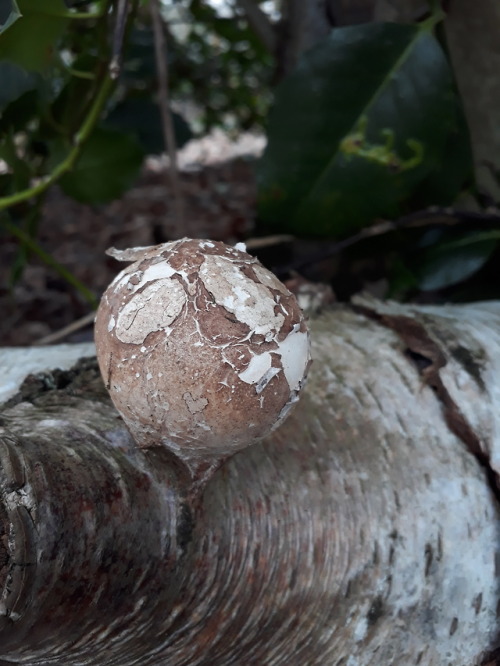Oxford, UK, April 2018Birch polypore (Piptoporus betulinus)These unassuming fungi are not much to lo
Oxford, UK, April 2018Birch polypore (Piptoporus betulinus)These unassuming fungi are not much to look at, but have been put to myriad uses throughout history. In prehistoric times, they would be used to carry an easily awoken fire from place to place - a small dried strip would be lit with a spark, and then reduced to a smoulder. They burn so slowly that these could then be carefully packed with bark and moss and carried to a new campsite, where they would be used to light a new fire. It’s also thought that they’ve been used as medicine. Ötzi the ‘iceman’ mummy from 3300BC, found on the border of Austria and Italy in 1991, was discovered with strips of birch polypore on a thong around his neck. These fungi contain polyporenic acid, which is known to be effective in killing certain parasitic worms. The iceman had most likely been treating his whipworm, the eggs of which were preserved along with his body.They are so tough that barbers used to sharpen their razors on a strip of their flesh, leading to them also becoming known as ‘razor strop fungus’. Incredibly, the young specimens (as seen in the top photo) that emerge as small spherical swellings before flattening out and revealing a pore surface, are edible (though they become too tough to eat as they age, as well as frequently being infected with various worms and insects), although they are not particularly desirable.A birch tree infected with birch polypore is a great find for someone living off the land, not only because of the usefulness of the fungi, but also of the tree itself - the thin, flexible, but tough bark has been used throughout history to weave everything from baskets to clothing. -- source link
Tumblr Blog : mushroomgay.tumblr.com
#history#prehistoric#mycology#mushrooms#mushroom identifcation#birch polypore#piptoporus betulinus#edible fungi#fungi uses#medicinal fungi


